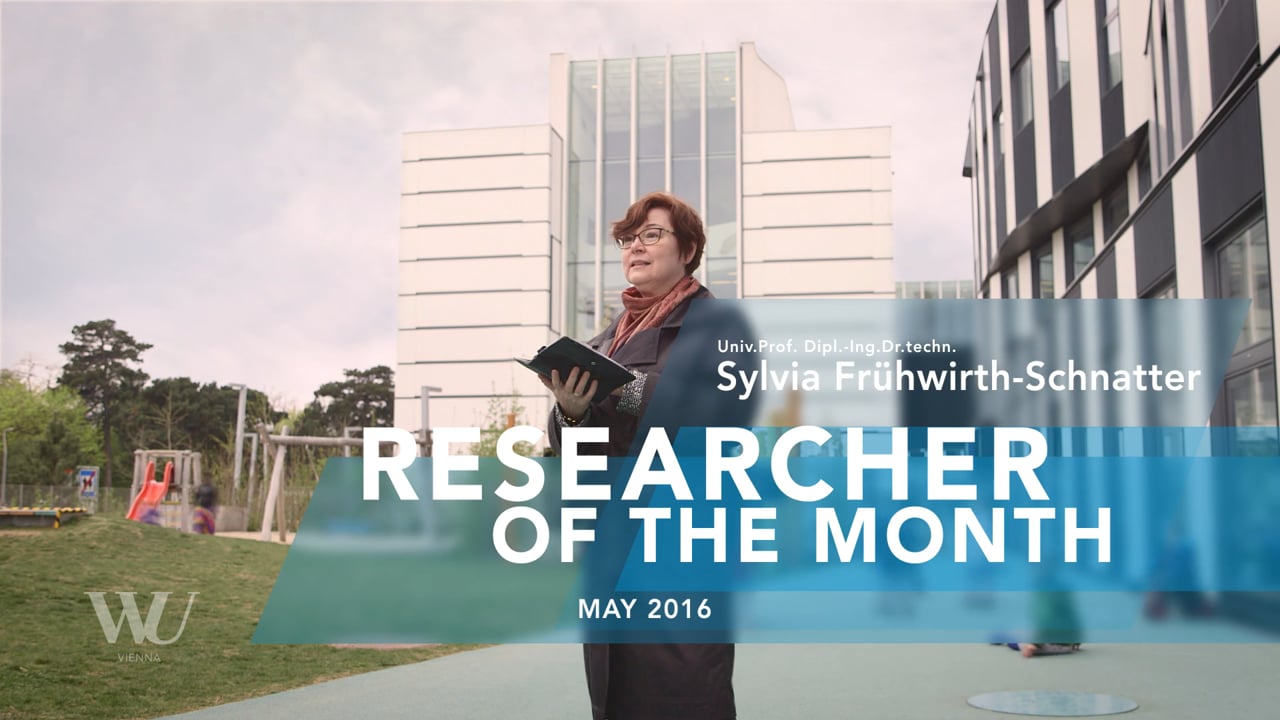Sylvia Frühwirth-Schnatter

Sylvia Frühwirth-Schnatter
Forscherin des Monats Mai
Maternity leave or career? The professional price of staying h
Mothers know exactly what they’re doing with regard to planning maternity leave in their professional career, according to a recent study by WU professor Sylvia Frühwirth-Schnatter, head of the Institute for Statistics and Mathematics. In this study, Professor Frühwirth-Schnatter und her colleagues used a new statistical model to investigate whether women who choose to take the maximum possible maternity leave experience long-term financial disadvantages. The results show that women take the long-term financial effects of the duration of their maternity leave into account very carefully before making a decision. It was also observed that women working in the blue-collar sector are more likely to experience higher financial losses after returning to work than white-collar employees.
Economic aspects usually play a key role when deciding how long mothers choose to go on maternity leave. How long can a woman afford to be on leave, how much will it damage her personal career, will it result in missed professional opportunities? WU professor Sylvia Frühwirth-Schnatter, head of the Institute for Statistics and Mathematics, and her colleagues Helga Wagner from the Johannes Kepler University Linz and Liana Jacobi, University of Melbourne, developed a new model that uses a learning algorithm to answer the question “What if?” and applied it to these maternity leave-related questions. Results were based on income and maternity leave data taken from a total of over 31,000 Austrian mothers. Mothers generally experience a loss in income in the first few years after returning to work after maternity leave. One reason for this is a reduction in working hours. The average loss of income was € 4,700 per year for the over 31,000 mothers included in the study. Income losses tended to normalize somewhat in the third year after returning to the work force, because more child care options are available for children at this age as compared to toddler-aged children, then again in the sixth year when children start school.
Conscious decision
The new statistical-econometric model revealed the financial restrictions women have to accept when they choose to spend a shorter or longer time at home with their children. The model also answers the question of whether mothers who take maternity leave of 18 months or longer would have had a career advantage if they had stayed home for a shorter period. The results demonstrate clearly that women are very aware of why they choose the options they do. Those women that decide to go on longer maternity leave generally do not experience long-term financial losses, while women that choose to go back to work after a short child-care period are in positions that would mean financial losses if they had stayed home longer.
“What we see today is that women who chose to stay with their children for a shorter time during the observation period would have in fact experienced financial losses of 15% if they had stayed home longer, due to advancement opportunities they would have missed. However, for the women that made a conscious decision to take full advantage of the maternity leave period of 18 months or longer, the short-term income deficits after returning to work level out with time and these women are back to their original income level within a reasonable time. In most cases, this is because these women had no potential advancement or pay raise opportunities to miss,” Frühwirth-Schnatter explains. Mothers who choose shorter maternity leave models are usually women in better-paid positions. The model also allows researchers to predict how likely parents are to select a shorter maternity leave option.
Type of work a deciding factor
The researchers’ model also provides insight into some of the factors responsible for income losses. The results show that women working in the blue-collar sector are disadvantaged as compared to white-collar employees – their income is reduced by approximately 10% after returning to work, even if they earned a comparable income before going on maternity leave. The duration of the maternity leave taken has no effect on this reduction. For all women returning to work after maternity leave, income losses are lower if they return to the same employer.
Income progression
As a member of a special national research network devoted to the social state and the Austrian labor market sponsored by the Austrian Science Fund (FWF), Sylvia Frühwirth-Schnatter had access to data from the Main Association of Austrian Social Security Institutions (Hauptverband der österreichischen Sozialversicherungsträger). “The comprehensive social system in Austria allows us access to unique sources of information like demographic data, working hours, and income progression of the Austrian population and gives us the opportunity to use statistical data to address important social and political issues,” says Professor Frühwirth-Schnatter. A legal amendment took effect in 2000 allowing women to opt for a longer maternity leave period – up to 30 months, as opposed to the maximum of 18 available previously. Starting from this, it was possible to track women over a period of six years, observing whether they chose the longer leave period and how their career path progressed in the first few years after returning to the work force. A particular focus was placed on income progression.
Political indications
These results demonstrate clearly how important it is for many women to return to work as soon as possible and emphasize the significance of sufficient child care facilities and other options to help parents better balance the demands of work and family.
